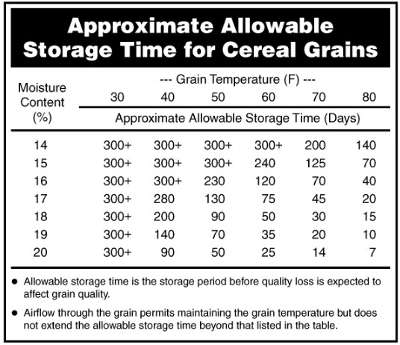
Grain can be stored in many types of facilities.
“The important point is that all storage options should keep the grain dry and provide adequate aeration to control grain temperature,” says North Dakota State University Extension agricultural engineer Ken Hellevang. “Grain must be dry and cool (near the average outdoor temperature) when placed in alternative storage facilities because providing adequate, uniform airflow to dry grain or cool grain coming from a dryer is not feasible.”
Structural Issues
Grain pushing against walls can damage buildings not built for grain storage. The wall must be anchored securely, and its structural members must be strong enough to transfer the force to the building poles or support structure without breaking or excessive bending.
“Typically, you’ll need additional poles and a grain wall to support the grain force in a pole building,” Hellevang says. “Hire an engineer to complete a structural analysis, or have a contractor follow exactly the building company recommendations to prevent a structural failure.”
Before placing grain in a building previously used for grain storage, look for anything out of alignment, such as wall bowing and distortions in the roofline. Bowing or bending indicates the load on the building exceeded the load for which it was designed and built. This weakens the structure. Also examine connections for separation or movement and add a gusset or splice to reinforce the connection if necessary.
Storing in Bags
Storing grain in poly bags is a good option, but it does not prevent mold growth in damp grain or insect infestations. Place grain in the bag at recommended storage moisture contents based on grain and outdoor temperatures during the potential storage period.
Heating will occur if the grain exceeds a safe storage moisture content and it cannot be aerated to control heating. The average temperature of dry grain will follow the average outdoor temperature.
Hellevang also has this advice:
- Select an elevated, well-drained site for the storage bags. Run the bags north and south so solar heating is similar on both sides. Sunshine on just one side heats that side, which can lead to moisture accumulation in the grain and spoilage on the cool side.
- Monitor the bags for damage. Wildlife can puncture the bags, allowing moisture in, which can lead to spoilage and the grain smell being released, which attracts more wildlife.
- Monitor the grain temperature at several places in the bags.
- Never enter a grain bag because it is a suffocation hazard. If unloading the bag with a pneumatic grain conveyor, the suction can “shrink wrap” a person.
Grain Piles
Grain frequently is stored short term in outdoor piles. However, precipitation is a severe problem for uncovered grain because grain is very porous. A 1-inch rain will increase the moisture content of a 1-foot layer of corn by 9 percentage points. This typically leads to the loss of at least a couple of feet of grain on the pile surface, which is a huge loss.
For example, a cone-shaped pile 25 feet high contains approximately 59,000 bushels of grain. Losing just 1 foot of grain on the surface is a loss of about 13 percent of the grain, which is $39,000 if the grain value is $4 per bushel and $78,000 at $8 per bushel. Aeration and wind blowing on the pile will not dry wet grain adequately to prevent spoilage.
Use a cover to prevent water infiltration. Drainage is critically important to the success of any grain storage. About 25,000 gallons of water will run off an area about 100 by 400 feet during a 1-inch rain. This water must flow away from the grain and the area next to it. When determining a location for a pile, examine the entire area to assure that flooding will not occur during major rain events.
The outdoor ground surface where grain will be piled should be prepared to limit soil moisture from reaching the grain. The storage floor also should be higher than the surrounding ground to minimize moisture transfer from the soil into the grain. Make sure the ground surface is crowned so moisture drains out and away rather than creating a wet pocket that leads to grain deterioration.
Also look for these issues: